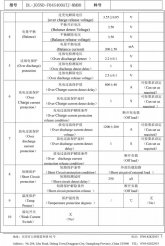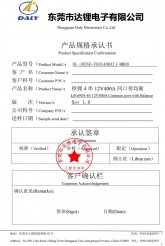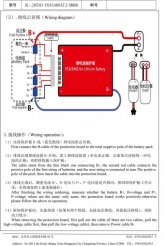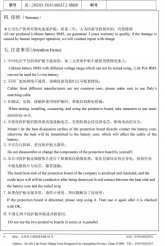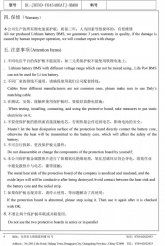Another question about our new setup! We're loving the switch to LFP. Now that spring is near, we're seeing bright, beautiful days of full sun after 2-3 months of low light. So for the first time, our battery is really getting power-charged.
We've recently been running into a problem when the sun hits the panels full-blast, the battery zooms up to max voltage and the BMS starts cutting power on and off to the whole system. That doesn't seem right to me. Surely it should let us keep using the power from the battery, then continue charging it once the voltage drops?
My BMS is is a 200amp in/400amp out BMS, advertized as Daly but has no branding on it. It's big and beefy and looks well built. No read-out or data access from it though.
When the bank hits 14.4, it's not simply that the power shuts off. The BMS makes clicking sounds and power gets cut on and off rapidly over and over. The inverter beeps spastically because it's 12v power supply is being cut on and off. The house power cuts in and out. After some rapid, repeated clicking and beeping from the system, the BMS will 'officially' cut off charge to the battery and the power goes out. The voltage must drop down to 12.2/12.1 before the BMS clicks again and the battery starts charging again and releases power back into the system. The BMS will let it drop as low as 11.9, but generally seems to allow charging again at 12.2.
We've taken to either shutting the system down in full sun and using no electricity, thus allowing the BMS to just shut off and stay off, OR splurging as much power as we can and creating a really heavy draw so the bank doesn't max out its voltage.
The latter works very well. Today we're running 3 freezers, charging some power tool batteries, running the computer monitor on it's brightest setting, and have turned every last light on in the house. Aside from plugging in a shopvac or table saw, that's as much as we can pull. With all of our stuff plugged in and pulling max power, the system is not reaching 14.4v and is not shutting off. It hovers between 13.9-14.2 and everything works happily.
As per the shunt's wiring diagram, I have the BATTERY- wired to B- on the BMS, then the P- on the BMS wired to the shunt, then the shunt wired to the system negative. The BATTERY+ is wired straight into the system positive. I also have a battery monitor hooked to the BATTERY+ and the BATTERY-, as well as on each side of the shunt. When the BMS kicks power on and off, the battery monitor's power hiccups as well. It doesn't shut off for an extended period, but the screen flashes on and off and it updates rapidly with the voltage jumping around between 12.0 to 14.4.
The shunt and the monitor came together and I wired them per the instructions. I might take the shunt out and see if that's causing a problem, but it doesn't seem like that's the problem to me.
Anyway... If specs help;
Array: 750 watt
CC: 60amp programmed for LFP
BMS: 200/400amp 4s 12v
Bank: 4s 12v 280ah LFP
Shunt: 100amp
Inverter: 2000/4000 watt pure sine
Average power draw at any time: 200 - 800 watts
Whole system is grounded to earth.
We've recently been running into a problem when the sun hits the panels full-blast, the battery zooms up to max voltage and the BMS starts cutting power on and off to the whole system. That doesn't seem right to me. Surely it should let us keep using the power from the battery, then continue charging it once the voltage drops?
My BMS is is a 200amp in/400amp out BMS, advertized as Daly but has no branding on it. It's big and beefy and looks well built. No read-out or data access from it though.
When the bank hits 14.4, it's not simply that the power shuts off. The BMS makes clicking sounds and power gets cut on and off rapidly over and over. The inverter beeps spastically because it's 12v power supply is being cut on and off. The house power cuts in and out. After some rapid, repeated clicking and beeping from the system, the BMS will 'officially' cut off charge to the battery and the power goes out. The voltage must drop down to 12.2/12.1 before the BMS clicks again and the battery starts charging again and releases power back into the system. The BMS will let it drop as low as 11.9, but generally seems to allow charging again at 12.2.
We've taken to either shutting the system down in full sun and using no electricity, thus allowing the BMS to just shut off and stay off, OR splurging as much power as we can and creating a really heavy draw so the bank doesn't max out its voltage.
The latter works very well. Today we're running 3 freezers, charging some power tool batteries, running the computer monitor on it's brightest setting, and have turned every last light on in the house. Aside from plugging in a shopvac or table saw, that's as much as we can pull. With all of our stuff plugged in and pulling max power, the system is not reaching 14.4v and is not shutting off. It hovers between 13.9-14.2 and everything works happily.
As per the shunt's wiring diagram, I have the BATTERY- wired to B- on the BMS, then the P- on the BMS wired to the shunt, then the shunt wired to the system negative. The BATTERY+ is wired straight into the system positive. I also have a battery monitor hooked to the BATTERY+ and the BATTERY-, as well as on each side of the shunt. When the BMS kicks power on and off, the battery monitor's power hiccups as well. It doesn't shut off for an extended period, but the screen flashes on and off and it updates rapidly with the voltage jumping around between 12.0 to 14.4.
The shunt and the monitor came together and I wired them per the instructions. I might take the shunt out and see if that's causing a problem, but it doesn't seem like that's the problem to me.
Anyway... If specs help;
Array: 750 watt
CC: 60amp programmed for LFP
BMS: 200/400amp 4s 12v
Bank: 4s 12v 280ah LFP
Shunt: 100amp
Inverter: 2000/4000 watt pure sine
Average power draw at any time: 200 - 800 watts
Whole system is grounded to earth.



